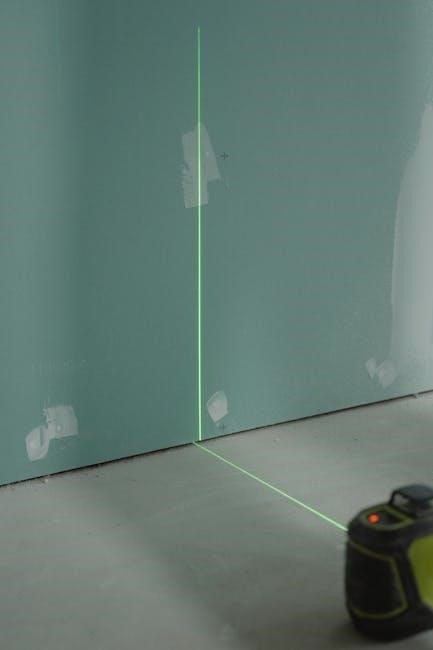chucks guide f18
Welcome to Chuck’s Guide for the F/A-18C Hornet, a comprehensive resource for mastering the aircraft in DCS World. This guide provides detailed procedures, controls setup, and advanced tactics to enhance your flying experience. Perfect for newcomers and experienced pilots alike, it covers everything from startup to combat, ensuring you get the most out of this iconic fighter jet.
Overview of the F/A-18C Hornet in DCS World
The F/A-18C Hornet in DCS World is a highly detailed, multirole fighter aircraft, capable of both air-to-air and air-to-ground missions. Its advanced avionics, including radar, targeting pods, and the JHMCS, make it a versatile platform for combat operations. Chuck’s Guide provides a comprehensive breakdown of its systems, sensors, and weapon employment, ensuring pilots can master its complexities and dominate in various scenarios.
Purpose and Scope of the Guide
Chuck’s Guide for the F/A-18C Hornet is designed to help pilots master the aircraft’s systems, controls, and combat capabilities in DCS World. The guide provides detailed, step-by-step instructions for startup, navigation, and weapons employment, ensuring pilots can efficiently operate the Hornet in various mission scenarios. It covers both basic and advanced techniques, making it an essential resource for pilots of all skill levels to enhance their proficiency and effectiveness in the virtual cockpit.

Aircraft Controls Setup
Configure joystick, throttle, and button mappings for optimal F/A-18C performance. Customize controls to enhance flight precision, ensuring efficient access to critical systems for improved immersion and responsiveness.
Cockpit Layout and Key Components
The F/A-18C Hornet’s cockpit is meticulously designed for efficiency, featuring a centralized control panel, multi-function displays, and essential systems like the Head-Up Display (HUD) and Helmet-Mounted Sight (JHMCS). The layout ensures quick access to critical instruments, simplifying operations during intense missions. This guide provides a detailed breakdown of each component, helping pilots master the aircraft’s systems and optimize their combat readiness.
Throttle and Stick Controls Configuration
Configuring the throttle and stick controls is crucial for precise flight control in the F/A-18C. Chuck’s Guide recommends assigning throttle functions to a dedicated axis for smooth power management. The stick should be set up with a natural feel, incorporating buttons for essential commands like the fire trigger and radar controls. Proper calibration ensures intuitive handling, enhancing responsiveness during both combat and standard flight maneuvers.
Custom Button Mappings for Efficiency
Custom button mappings play a vital role in streamlining cockpit interactions. Chuck’s Guide suggests assigning frequently used functions like targeting pod controls, countermeasures, and communications to specific buttons. This setup reduces pilot workload and enhances responsiveness during critical moments. By tailoring your button layout to personal preferences, you can achieve greater efficiency and precision, especially in high-stress combat scenarios and dynamic mission environments.
Cockpit and Equipment Overview
Chuck’s Guide provides a detailed breakdown of the F/A-18C Hornet’s cockpit, highlighting key components like the HUD, JHMCS, and avionics systems. This section helps pilots master the aircraft’s advanced features, ensuring effective operation during missions.
Instrument Panels and Avionics Systems
The F/A-18C Hornet features advanced instrument panels and avionics systems, including the Up-Front Controller (UFC), Integrated Communications System (ICS), and Digital Engine Display (DED). These systems provide critical flight data, navigation, and targeting information. Chuck’s Guide details how to effectively utilize these panels for optimal aircraft performance, ensuring pilots can access vital information seamlessly during all phases of flight.
Head-Up Display (HUD) and Its Functions
The HUD in the F/A-18C Hornet provides essential flight and targeting data, displayed directly in the pilot’s line of sight. It includes altitude, airspeed, heading, and targeting reticles, enhancing situational awareness. Chuck’s Guide details how to interpret HUD symbols and optimize its use for landing, combat, and navigation, ensuring pilots can access critical information without diverting their gaze from the cockpit environment.
Helmet-Mounted Sight (JHMCS) Operations
The JHMCS allows pilots to aim weapons by looking at targets, enhancing combat efficiency. Chuck’s Guide explains how to use the sight for missile targeting and situational awareness. It integrates with radar and other systems, enabling seamless operations. Proper setup and calibration are emphasized to maximize its effectiveness in dogfighting and precision strikes.
Startup and Shutdown Procedures
Master the F/A-18C’s startup and shutdown processes with Chuck’s Guide. Detailed checklists and step-by-step instructions ensure safe and efficient aircraft preparation for missions and post-flight protocols.
Pre-Start Checklist and Procedures
Follow Chuck’s Guide for a thorough pre-start checklist to ensure the F/A-18C is ready for engine ignition. Begin with power switch activation, battery voltage checks, and fuel switch verification. Confirm avionics systems are operational, including navigation and communication equipment. Inspect flight control surfaces and ensure all warning lights are extinguished. Finally, perform a visual inspection of the aircraft and confirm all switches are in the correct position before proceeding to engine start.
Engine Start and System Initialization
Begin by activating the auxiliary power unit (APU) to provide initial power. Move the throttle to the IDLE position and engage the engine start switches. Monitor engine oil pressure and hydraulic systems as they initialize. Once both engines are running, perform a quick check of all vital systems, including avionics and flight controls. Complete the system initialization by running the radar and targeting pod Built-In Tests (BIT) to ensure full operational readiness.
Post-Startup Checks and Confirmations
After engine start, confirm all systems are operational. Check HUD alignment, flight control surfaces, and avionics functionality. Verify JHMCS, RWR, and datalink systems are active. Ensure radar is set to TWS mode and targeting pods are initialized. Test countermeasures and verify IFF is set to Mode 1. Complete the checklist to confirm all systems are ready for taxi and takeoff, ensuring safe and effective mission execution.

Ground and Taxi Operations
Master taxi techniques, safety protocols, and pre-takeoff checks. Ensure proper communication with ATC and follow detailed checklists for efficient ground movements and alignment with mission requirements.
Taxiing Techniques and Safety Measures
Proper taxiing involves smooth throttle control and awareness of surroundings. Use taxiway signs and follow ATC instructions. Ensure all lights and systems are functional.
Always perform a pre-taxi checklist to verify brakes, flaps, and instruments. Maintain safe distances from other aircraft and obstacles.
Use ground crew guidance when available. Avoid sudden movements to prevent skidding or collisions. Stay vigilant and communicate clearly with air traffic control.
Communication and ATC Interaction
Clear communication is essential for safe ground operations. Use standard aviation terminology and follow ATC instructions precisely. Always monitor the correct frequency and acknowledge commands promptly. Ensure your radio settings match the ATC frequency. Avoid unnecessary chatter to maintain clear communication channels. Proper communication ensures smooth taxiing and prevents potential conflicts. Adhering to these protocols enhances overall safety and efficiency during ground operations.
Pre-Takeoff Checks and Final Preparations
Before takeoff, ensure all systems are operational and configured correctly. Set flaps to the recommended position and verify control surfaces are functioning. Review the instrument panel for any anomalies and align the HUD for optimal visibility. Conduct a final check of fuel, hydraulics, and electrical systems. Confirm weapons and targeting pods are initialized if armed. Run through the pre-takeoff checklist to ensure all safety protocols are met. This ensures a smooth and safe departure.

Takeoff and Climb Procedures
Advance throttles to full military power, monitor instrument readings, and maintain centerline alignment. Gradually rotate at recommended speed for lift-off, then configure flaps and gear for climb.
Takeoff Techniques and Best Practices
Advance throttles to full military power, ensuring proper alignment with the runway centerline. Monitor instrument readings for optimal performance. Rotate at the recommended speed for smooth lift-off. Gradually retract flaps and gear to reduce drag. Use the HUD for situational awareness and maintain a steady climb rate. Adjust pitch and power as needed for efficient ascent. Always follow checklist procedures to ensure safety and compliance with best practices.
Climb and Level-Off Procedures
After takeoff, advance throttles to maintain a steady climb rate, monitoring the vertical velocity indicator. Level off at the desired altitude by reducing power and adjusting pitch attitude. Engage the autopilot if equipped to stabilize altitude and heading. Ensure flaps and gear are fully retracted for optimal aerodynamic efficiency. Adjust fuel flow and trim settings for a smooth, stable climb and transition to cruise configuration.
Configuring the Aircraft for Cruise
Once leveled off, configure the aircraft for cruise by optimizing fuel flow and adjusting trim settings for steady flight. Enable autopilot and autothrottle to maintain altitude and airspeed. Adjust the HUD and avionics systems for situational awareness. Monitor engine performance and systems status to ensure efficiency. Fine-tune power settings and pitch attitude to achieve optimal cruise performance, balancing speed and fuel consumption for the remaining mission profile.

Radar and Sensor Systems
The F/A-18C’s radar and sensors are critical for combat effectiveness. Utilize Track-While-Scan (TWS) mode for multiple target tracking and engage with AIM-120 missiles. Leverage targeting pods for precision strikes and employ the Radar Warning Receiver (RWR) to detect threats. These systems integrate seamlessly, enhancing situational awareness and tactical decision-making during missions.
Track-While-Scan (TWS) Mode Operations
Track-While-Scan (TWS) mode enables the F/A-18C to track multiple targets simultaneously while scanning a designated area. This mode is ideal for air-to-air combat, allowing the pilot to engage targets with AIM-120 missiles while maintaining situational awareness. TWS mode supports datalink and situational awareness (SA) capabilities, enhancing targeting accuracy and combat efficiency. Refer to pages 183-188 of Chuck’s Guide for detailed operational procedures and best practices for utilizing TWS effectively in various combat scenarios.
Targeting Pods and Their Utilization
Targeting pods, such as the ATFLIR and LITENING II, are essential for precision strikes in the F/A-18C. These systems provide infrared and laser targeting capabilities, enabling accurate delivery of guided munitions. The ATFLIR pod excels in air-to-ground missions, while the LITENING II offers advanced targeting and reconnaissance features. Proper utilization of these pods requires careful planning and integration with the aircraft’s avionics, as detailed in Chuck’s Guide, to maximize combat effectiveness. Choose the right pod for your mission objectives to ensure optimal results in various combat scenarios, leveraging their unique capabilities for successful engagements. Refer to page 471 for operational insights.
Radar Warning Receiver (RWR) Codes and Usage
The Radar Warning Receiver (RWR) is a critical defensive system in the F/A-18C, alerting pilots to hostile radar emissions. Chuck’s Guide details RWR codes, symbols, and threat identification, enabling pilots to recognize and respond to enemy activity effectively. Understanding these codes is vital for situational awareness and evasive maneuvers. Refer to the guide for comprehensive insights on maximizing the RWR’s capabilities in various combat scenarios, ensuring optimal defensive strategies and enhanced mission success.

Weapons and Combat Systems
The F/A-18C features advanced air-to-air missiles like the AIM-120 and air-to-ground weaponry, including laser-guided bombs. Chuck’s Guide details their effective employment and integration with radar systems for precise targeting and mission success.
Air-to-Air Missile Systems and Employment
The F/A-18C’s air-to-air capabilities include AIM-120 AMRAAM and AIM-9X Sidewinder missiles. TWS mode enables tracking multiple targets simultaneously. The AIM-120 excels at beyond-visual-range engagements, while the AIM-9X is highly effective in close combat. Chuck’s Guide provides tactics for optimal missile employment, emphasizing radar utilization, datalink integration, and situational awareness. Proper countermeasure deployment is also covered to enhance survivability during intense dogfights.
Air-to-Ground Weaponry and Delivery
The F/A-18C excels in air-to-ground missions with precision weapons like the GBU-12 laser-guided bomb and AGM-65 Maverick missile. Chuck’s Guide details effective delivery techniques, emphasizing LITENING II targeting pod use for accurate strikes. Proper weapons configuration and release parameters are covered, ensuring maximum effectiveness in various combat scenarios while minimizing collateral damage. The guide also explains optimal loadouts for different mission profiles.
Countermeasures and Defensive Systems
The F/A-18C’s defensive systems are crucial for survival. Chuck’s Guide explains AN/ALQ-128 EW suite operations, radar warning receiver (RWR) code identification, and chaff/flare deployment. Techniques for countering missile threats are detailed, including optimal evasive maneuvers and ECM usage. Understanding these systems enhances situational awareness, enabling pilots to respond effectively to hostile actions and increase mission success rates in hostile environments.

Navigation and Communication
Mastering navigation and communication in the F/A-18C is essential. Chuck’s Guide covers GPS, TACAN, waypoint navigation, and effective communication strategies to enhance your mission success.
Waypoint Navigation and Mission Planning
Waypoint navigation is a cornerstone of effective mission planning in the F/A-18C. Chuck’s Guide provides detailed steps for importing and managing waypoints, ensuring precise mission execution. Learn how to set waypoints, utilize the Moving Map display, and integrate with the Horizontal Situation Indicator (HSI) for accurate navigation. The guide also covers TACAN system usage and advanced mission planning strategies to enhance your operational efficiency and situational awareness during flight.
Effective Communication Strategies
Effective communication is vital for successful missions in the F/A-18C. Chuck’s Guide emphasizes clear radio protocols, proper use of datalink for target sharing, and concise callouts. Learn standard ATC and wingman phrases, brevity codes, and emergency procedures. The guide also covers setting up radio frequencies, using the communications panel, and integrating with AI wingmen for seamless teamwork. Mastering these strategies enhances situational awareness and mission coordination.
GPS and TACAN System Utilization
Chuck’s Guide details the effective use of GPS and TACAN systems in the F/A-18C for precise navigation. GPS enables accurate waypoint tracking and mission planning, while TACAN provides distance and bearing to nearby stations. Together, they enhance situational awareness, especially during low-visibility or combat scenarios. The guide emphasizes proper setup, alignment with waypoints, and integration with other avionics for seamless navigation, ensuring efficient mission execution and return-to-base protocols.

Landing and Recovery Procedures
Chuck’s Guide provides a structured approach to landing the F/A-18C, including carrier recovery techniques and post-landing protocols. Essential checklists ensure a safe and precise touchdown.
Approach Techniques and Checklists
Chuck’s Guide details essential approach techniques, emphasizing precise speed and altitude control. Comprehensive checklists ensure readiness for various landing scenarios, including carrier and runway approaches. The guide highlights the importance of maintaining situational awareness and proper alignment with visual cues. Detailed procedures for instrument-guided and visual approaches are provided, along with critical pre-landing checks to guarantee a smooth and safe touchdown in all conditions;
Carrier Landing and Recovery
Chuck’s Guide provides detailed procedures for carrier landings, emphasizing precise alignment with the carrier and controlled angle of attack. It outlines the use of the Automatic Carrier Landing System (ACLS) and critical checklist items for a safe approach. The guide also covers arrestor hook engagement, wire trapping, and post-recovery protocols. These steps ensure a smooth and incident-free carrier recovery, even in challenging conditions.
Post-Landing and Shutdown Protocols
Chuck’s Guide details essential post-landing and shutdown procedures to ensure safety and proper aircraft securing. After touchdown, follow the post-landing checklist, including slowing down, exiting the runway, and engaging the parking brake. Proceed with engine shutdown, securing avionics, and completing the shutdown checklist. These protocols help prevent damage and prepare the aircraft for ground operations, adhering to real-world military practices for the F/A-18C Hornet.

Advanced Tactics and Tips
Chuck’s Guide offers expert tactics for the F/A-18C, including optimized radar use, effective missile employment, and countermeasure strategies. Master situational awareness and combat efficiency with proven techniques.
Combat Maneuvering and Engagements
Chuck’s Guide details advanced combat techniques for the F/A-18C, emphasizing situational awareness and decisive action. Master Track-While-Scan (TWS) mode for multi-target engagements, optimize AIM-120 missile usage, and employ JHMCS for precise targeting. Learn effective countermeasure strategies to evade threats and maintain offensive advantage. The guide provides tactical insights for dogfighting, radar management, and weapon system synchronization, ensuring pilots can dominate in dynamic combat scenarios with precision and confidence.
Optimizing Radar and Sensor Use
Chuck’s Guide emphasizes mastering radar and sensor systems for superior situational awareness. Learn to effectively utilize TWS mode for tracking multiple targets, interpret RWR codes to identify threats, and integrate targeting pods for precision strikes. The guide provides tips for managing radar modes, optimizing sensor range, and maintaining tactical advantage in both air-to-air and air-to-ground scenarios, ensuring effective use of the F/A-18C’s advanced avionics.
Advanced Weapon Employment Strategies
Chuck’s Guide details advanced tactics for effective weapon use, including optimal missile employment and bomb delivery. Learn to utilize TWS mode for beyond-visual-range combat, manage AIM-120 launches, and employ datalink for coordinated attacks. The guide also covers ammo conservation strategies, countermeasure usage, and situational awareness to maximize combat effectiveness in various scenarios, ensuring precise and efficient weapon deployment in the F/A-18C Hornet.

Additional Resources and References
Explore official NATOPS manuals, Mudspike forums, and YouTube tutorials by Redkite and Spudknocker for deeper insights into the F/A-18C Hornet. These resources complement Chuck’s Guide, offering practical tips and visual aids to enhance your learning experience.
Recommended Reading and Manuals
For in-depth knowledge, refer to the official NATOPS manual and Chuck’s comprehensive guide. Additional resources include Mudspike forums, YouTube tutorials by Redkite and Spudknocker, and the DCS F/A-18C Hornet Flight Manual. These materials provide detailed insights into aircraft systems, procedures, and advanced tactics, ensuring a well-rounded understanding of the F/A-18C Hornet’s capabilities and operation in DCS World.
Online Communities and Forums
Engage with online communities like Mudspike and Reddit for discussions on Chuck’s Guide and the F/A-18C. These forums offer valuable insights, troubleshooting tips, and strategies shared by experienced pilots. Participate in threads dedicated to DCS World, where users exchange knowledge and feedback. These platforms complement the guide by providing real-world applications and advice, helping you refine your skills and stay updated on the latest developments.
Video Tutorials and Training Missions
Video tutorials and training missions complement Chuck’s Guide, offering hands-on learning for the F/A-18C. YouTube channels like Spudknocker provide startup and takeoff tutorials, while Redkite covers advanced systems like ATFLIR and LITENING II targeting pods. These resources, along with the guide, enhance your understanding of radar, weapons, and combat tactics, making them indispensable for mastering the Hornet in DCS World.
